Counterfeit Detection: 2017 One Kilo Chinese Silver Panda 300 Yuan
Posted on 4/11/2017
NGC recently received a peculiar-looking 2017 One Kilo Silver 300 Yuan Panda. Although the coin weighed precisely one kilogram, just as it should, the coin was much thicker than other one kilo Silver Pandas. Unfortunately for the submitter, it turned out that this coin was a relatively high quality fake made mostly of copper and zinc.
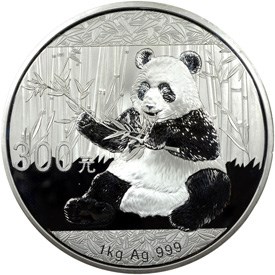 |
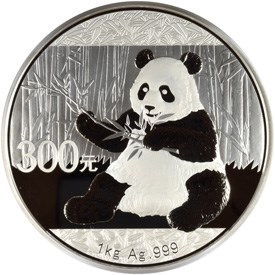 |
| 2017 Silver Panda 300 Yuan: counterfeit (left) and genuine (right) Click images to enlarge. |
|
Compared side-by-side with an authentic example, the forgery appears to have even sharper details than the genuine coin, which is counterintuitive because fakes are generally known for having poor design definition. Note how strong the lines are at the center of the leaves and between the bamboo stalks on the fake. These lines are much finer on the authentic coin.
There are other notable differences between the spurious and authentic coins. For example, the “300” and Yuan character are thinner on the counterfeit and are also shifted further to the left than they should be.
 |
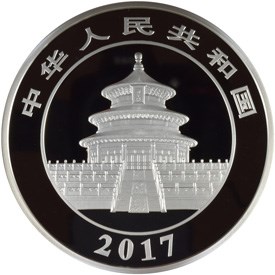 |
| 2017 Silver Panda 300 Yuan: counterfeit (left) and genuine (right) Click images to enlarge. |
|
The obverse (the dated side, which NGC encapsulates face down) suffers from many of the same issues as the reverse. The date is done in a different style, and the digits are much too thin. In addition, the details of the Temple of Heaven appear to be much sharper on the counterfeit, particularly at the stairs. The lines and pillars are far too prominent on the fake.
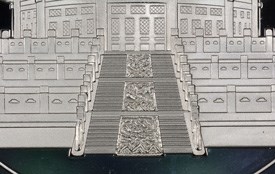 |
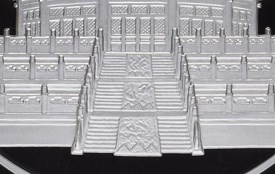 |
| Diagnostics: Counterfeit 2017 Panda S300Y (left) and genuine, (right) Click images to enlarge. |
|
Counterfeits are usually known for having details that are too weak, not too sharp. In this case, the legitimate panda coin has a much more nuanced design that carefully blends the various elements. The counterfeiter, however, likely did not have the technique, technology or time to match the precision of the authentic coin. As a result, the fake has details that are very sharp, but also very plain.
While there are plenty of subtle design differences, this piece would likely fool many investors who not especially familiar with the subtleties of the coin’s design. The design is about right, the coin looks silver and it weighs a kilogram, which would probably give most collectors confidence in its authenticity.
There is one glaring issue, however, that is difficult to overlook: the coin is far too thick.
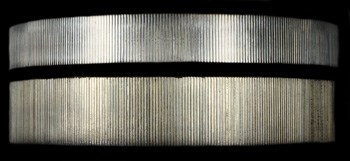 |
|
| Diagnostics: Genuine silver kilo coin (top) and fake (bottom) | |
This Panda weighs exactly 1,000 grams, just as it should, but since the piece is not silver, the counterfeiter had to compensate for the lower density of the metals used by making the coin thicker. As a result, the coin is 44% thicker than it should be: 18.7mm versus the correct 13mm.
The fake even arrived at NGC in a capsule, which must have been custom-made by the counterfeiter to fit the coin’s larger thickness. This capsule would likely give a prospective buyer the impression that this coin was officially issued since legitimate pieces are distributed in capsules. Clearly, there is no limit to what a counterfeit will do to deceive collectors.
When purchasing coins of any type, it is important to be vigilant. With technology advancing at breakneck speed, counterfeits will only become more deceptive. Coins must be closely examined and ideally compared to known genuine examples. As always, US and world coins certified by NGC are guaranteed to be genuine.
Interested in more Counterfeit Detection articles, click here.
Stay Informed
Want news like this delivered to your inbox once a month? Subscribe to the free NGC eNewsletter today!
Add Coin
Join NGC for free to add coins, track your collection and participate in the NGC Registry. Learn more >
